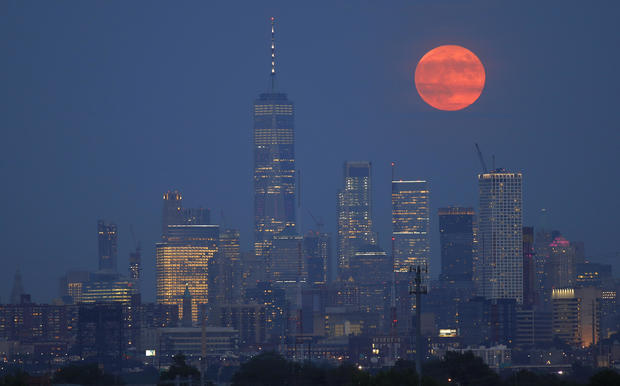POLISH PRIDE MARCH
Warsaw (AFP)
Poland's President Andrzej Duda, who is running for re-election in the conservative, Catholic EU member, on Saturday said he wanted the constitution to explicitly forbid the adoption of children by same-sex couples.
He said he planned to propose a constitutional amendment on Monday.
The announcement marked the head of state's latest reference to gay rights in the electoral campaign, after he stoked controversy by likening "LGBT ideology" to communism before the first round of the vote last month.
"In Poland's constitution, it should be explicitly stated that anyone in a same-sex relationship is forbidden from adopting a child," Duda said at a campaign event in the southern town of Szczawno-Zdroj.
"To ensure the safety of the child and a proper upbringing, for the Polish state to safeguard the rights of children... I believe such an entry should exist," he added.
Poland's President Andrzej Duda, who is running for re-election in the conservative, Catholic EU member, on Saturday said he wanted the constitution to explicitly forbid the adoption of children by same-sex couples.
He said he planned to propose a constitutional amendment on Monday.
The announcement marked the head of state's latest reference to gay rights in the electoral campaign, after he stoked controversy by likening "LGBT ideology" to communism before the first round of the vote last month.
"In Poland's constitution, it should be explicitly stated that anyone in a same-sex relationship is forbidden from adopting a child," Duda said at a campaign event in the southern town of Szczawno-Zdroj.
"To ensure the safety of the child and a proper upbringing, for the Polish state to safeguard the rights of children... I believe such an entry should exist," he added.
Duda, who is from the governing nationalist Law and Justice (PiS) party, said he would sign a presidential draft amendment to the constitution on the matter on Monday and submit it to parliament.
The incumbent and his rival in the run-off next weekend, centrist Warsaw mayor Rafal Trzaskowski, are currently polling neck to neck, with opinion surveys divided as to who has the edge.
On Saturday, Trzaskowski told reporters that he is also "against same-sex couples adopting children".
"I believe that is the stance of most of the political parties.... On this particular matter I agree with the president," he added in the central city of Kalisz.
Trzaskowski is generally seen as favourable to gay rights. He has said he is open to the idea of civil partnerships between same-sex couples, which are currently banned in Poland.
He also signed an "LGBT+ Declaration" promising to protect gay people when he was elected mayor of Warsaw.
Just nine percent of Poles believe that gay and lesbian couples should have the right to adopt children, according to a 2019 opinion poll by the CBOS institute. Twenty-nine percent support gay marriage.
Gay rights were also a key issue ahead of Poland's parliamentary elections in October.
© 2020 AFP
DUDA VISITED TRUMP LAST WEEK NON MASK WEARING MEETING
ONLY FORMAL MEETING TRUMP HAS HAD WITH A FOREIGN LEADER SINCE LOCKDOWN.
HE VISITED BEFORE THIS RUNOFF ELECTION TO SHOW OFF HIS POWER CONNECTIONS IDEOLOGICALLY WITH TRUMP FASCISM IE. MORE RIGHT WING ASSAULTS ON HUMAN RIGHTS IN EASTERN EUROPE.
IT WAS NEVER STALINISM IT WAS ALWAYS CATHOLICISM IN THE EAST AND ORTHODOXY IN THE WEST. STILL IS.
IT TOOK LITTLE FOR THEM TO ALIGN WITH THE NAZI'S ON A COMMON POGROM.
THE CATHOLIC NATIONALISTS DESTROYED POLISH SOLIDARITY WITH THE MUTUAL COOPERATION OF THE CIA AND THE VATICAN AND THE LEADERSHIP OF SOLIDARNOSC.
TODAY THE AUTHORITARIANS ARE BACK IN POWER ATTACKING WOMEN AND LGBTQ RIGHTS.
















/cdn.vox-cdn.com/uploads/chorus_image/image/66972485/GettyImages_1217494677.0.jpg)
:no_upscale()/cdn.vox-cdn.com/uploads/chorus_asset/file/20049456/GettyImages_1219296341.jpg) Workers in Norilsk, Russia, clean up an oil spill caused in part by thawing permafrost. Denis Kozhevnikov/TASS via Getty Images
Workers in Norilsk, Russia, clean up an oil spill caused in part by thawing permafrost. Denis Kozhevnikov/TASS via Getty Images:no_upscale()/cdn.vox-cdn.com/uploads/chorus_asset/file/20049254/Artboard_2_copy_3_80.jpg)